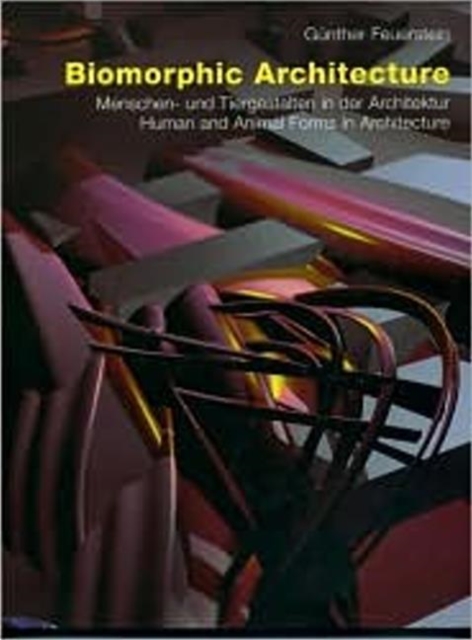
Biomorphic Architecture : Human and Animal Forms in Architecture Hardback
by Gunther Feuerstein
Hardback
Description
Text in English and German. Mankind needs to relate to inanimate matter as well.
Manking 'animates' stones, mountains, rivers, yes even the world and the cosmos so that it can communicate with them.
There is quite clearly a need to initiate individual contact also with architecture, with our surroundings.
This is easier if we can also recognise certain characteristics of our own bodies in the constructed bodies of the built environment.
We can go well beyond the common phenomenon of corporeality to find countless analogies between buildings and human beings, thus demonstrating a first step towards an anthropomorphy of architecture.
These statements become clearer if a column is interpreted as an anthropomorphic element.
If certain features in facades are reminiscent of a pair of eyes, then architectural physiognomy helps us to a dialogue: the building is looking at us, in the direct sense of the word.
In the world of Christian symbolism the church -- spatially and theologically -- is constantly compared with the body of Christ, and thus becomes an image of a man-god.
The church is the 'mysterious body of Christ', and all parts of the building become metaphors of Christ and his congregation.The 'organic' architecture of the 20th century in its three-dimensional and sculptural manifestations constantly addresses the corporeality of biological creatures.
In very recent times we are surprised how often the metaphor of man and architecture occurs: in the work of Ricardo Porro, Imre Makovecz, Santiago Calatrava, Reima Pietila and others.
Zoomorphic architecture is a variant of anthropomorphic architecture.
Elephants, birds, fishes, insects do not just appear in many current works of modern architecture like those of Frank O Gehry and Coop Himmelblau, they are also absurd manifestations of trivial architecture that has also to be considered in its everyday quality.
If we are talking about 'expanded' architecture, then cities, the world and even the cosmos have to be included.
Mankind is still moved by the transfer from man as microcosm to the universe as macrocosm.
Information
-
Only a few left - usually despatched within 24 hours
- Format:Hardback
- Pages:208 pages, 205 b&w illustrations
- Publisher:Edition Axel Menges
- Publication Date:20/08/2002
- Category:
- ISBN:9783930698875
£46.00
£36.45
Information
-
Only a few left - usually despatched within 24 hours
- Format:Hardback
- Pages:208 pages, 205 b&w illustrations
- Publisher:Edition Axel Menges
- Publication Date:20/08/2002
- Category:
- ISBN:9783930698875






